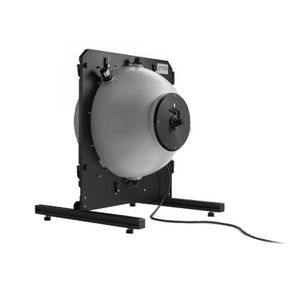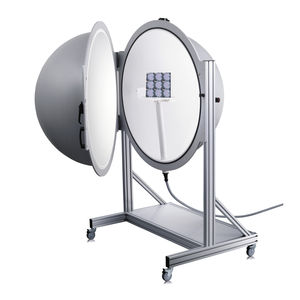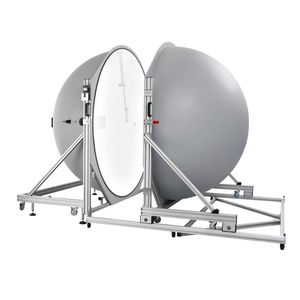
- Detection - Measurement
- Optical and Acoustic Measurements
- Integrating sphere
- Konica Minolta Sensing Americas
- Company
- Products
- Catalogs
- News & Trends
- Exhibitions
Luminous flux measurement integrating sphere ISP 75

Add to favorites
Compare this product
Characteristics
- Options
- for luminous flux measurement
Description
One of the most important tests in light measurement is the assessment of the total radiant power or luminous flux of light sources using integrating spheres. An integrating sphere’s inside surface is coated with a diffusely reflecting material which guarantees complete integration and homogenization of the emitted radiation. The integrated light is then measured at the detector port.
A complete series of integrating spheres has been developed by Instrument Systems and is available in a wide range of sizes to provide functionality for a broad spectrum of applications. The maximum dimension of the light source to be measured provides the deciding factor in choosing the appropriate integrating sphere. Larger sources require the use of larger integrating spheres in order to keep measurement errors to a minimum.
Instrument Systems integrating spheres all have a side entrance port for determining luminous flux in the 2π configuration (i.e. for determining emission into the forward hemisphere only). With larger integrating spheres, the test object can be mounted in the center, permitting measurements in the 4π configuration (i.e. for determining emission in all directions).
The ISP 75 was specially developed for characterization of standardized single LEDs and LED chips in the production environment. The 15mm measuring port makes the ISP 75 ideal for installation in production equipment. The measuring port can be adjusted for different LED types and sizes with the assistance of apertures. A silica glass window is provided as an option for protection against dirt and environmental influences.
Catalogs
Other Konica Minolta Sensing Americas products
Integrating Spheres
Related Searches
- Dust analyzer
- Portable analyser
- Compact analyser
- Konica Minolta spectrophotometer
- High-performance analyser
- Konica Minolta visible spectrophotometer
- Konica Minolta benchtop spectrophotometer
- UV spectrophotometer
- Konica Minolta color spectrophotometer
- Konica Minolta USB spectrophotometer
- Optical analyser
- Konica Minolta color measurement spectrophotometer
- UV-Vis spectrophotometer
- Color meter
- Photometer
- Absorption spectrophotometer
- Konica Minolta glossmeter
- Konica Minolta spectroradiometer
- Measuring spectrophotometer
- Konica Minolta portable spectrophotometer
*Prices are pre-tax. They exclude delivery charges and customs duties and do not include additional charges for installation or activation options. Prices are indicative only and may vary by country, with changes to the cost of raw materials and exchange rates.










